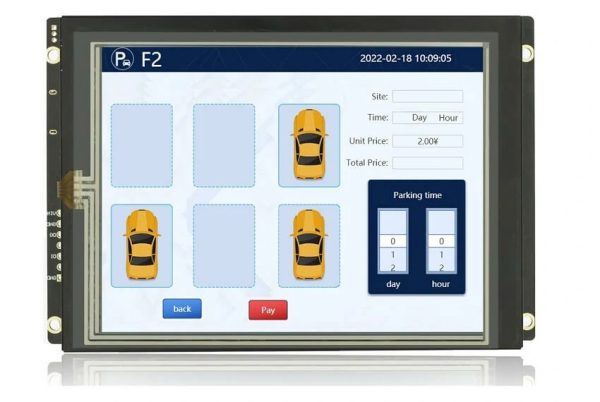
串口屏已广泛应用于现代社会,成为各类电子设备的视觉界面。本文将深入探讨串口屏技术的组成结构、工作原理、优势特点、应用领域及未来发展趋势。
理解串口屏
串口屏基于薄膜晶体管控制显示面板上每个像素的原理工作。这使得光线传输能够被精确控制,从而呈现出色彩鲜艳、高分辨率和高对比度的图像。串口屏技术的演进为更薄、更轻、更节能的显示屏奠定了基础。
组件与工作原理
串口屏由多个关键组件构成:
- 液晶层:位于两片玻璃基板之间,液晶层在电场作用下改变取向,从而调节光的透过。
- 颜色滤光片:子像素颜色滤光片(通常为红、绿、蓝三色,即RGB)通过控制光线通过液晶层的透过率,生成丰富多彩的颜色。
- 背光:大多数串口屏采用LED(发光二极管)等背光光源,均匀照亮显示面板,确保屏幕亮度均匀。
- 薄膜晶体管(TFT):TFT集成于玻璃基板中,作为开关控制施加到每个像素的电压,从而调节透过光的强度。
串口屏的优势
- 高分辨率:串口屏提供卓越的分辨率,确保图像清晰锐利,带来优质的观看体验。
- 色彩准确性:通过先进的色彩过滤技术,TFT LCD可准确再现广泛的色彩范围,使其成为色彩敏感应用的理想选择。
- 快速响应时间:采用TFT晶体管可实现快速响应,有效减少动态内容(如视频和游戏)中的运动模糊和鬼影现象。
- 节能:与传统显示技术相比,串口屏技术功耗更低,适用于电池供电设备和节能应用。
- 灵活性:串口屏可定制不同尺寸、形状和外形,便于集成到各类设备和系统中。
行业应用
串口屏的灵活性和性能使其在众多行业中得到广泛应用:
消费电子
智能手机、平板电脑、笔记本电脑和电视均采用串口屏,为用户提供生动画面和沉浸式观看体验。
汽车
在汽车领域,串口屏作为车载信息娱乐系统、仪表盘和抬头显示器的核心界面,为驾驶员和乘客提供便捷的信息和娱乐内容访问。
医疗
串口屏是医疗成像设备(如超声波机器、X光系统和患者监护仪)的核心组件,助力实现精准诊断与治疗。
工业控制
在工业环境中,串口屏被应用于人机交互(HMI)、控制面板和工业电脑,使操作员能够精确监控和控制制造流程。
游戏与娱乐
串口屏是游戏主机、街机和多媒体播放器的重要组成部分,通过生动图形和响应迅速的游戏体验,为用户带来沉浸式游戏体验。
未来趋势与创新
展望未来,以下趋势与创新将塑造串口屏的未来:
- HDR(高动态范围):串口屏采用HDR技术,可提升对比度、色彩准确性和整体视觉保真度,满足HDR内容消费的需求。
- 柔性与可折叠显示屏:柔性显示技术的发展将推动可弯曲和可折叠TFT LCD模块的研发,为创新形态和应用开辟新可能性。
- Mini-LED 背光技术:Mini-LED 背光技术可提升亮度、对比度和能效,将 串口屏的性能提升至新高度。
- AR(增强现实)集成:将 串口屏与增强现实(AR)技术集成,可创造沉浸式 AR 体验,使虚拟物体叠加于物理世界,提升生产力、娱乐性和教育性。
综上所述,串口屏代表了视觉显示技术的巅峰,在性能、灵活性和创新性方面均处于领先地位,适用于广泛的应用领域。随着技术的不断进步,串口屏将持续推动视觉通信与交互领域的边界,实现更多可能性。